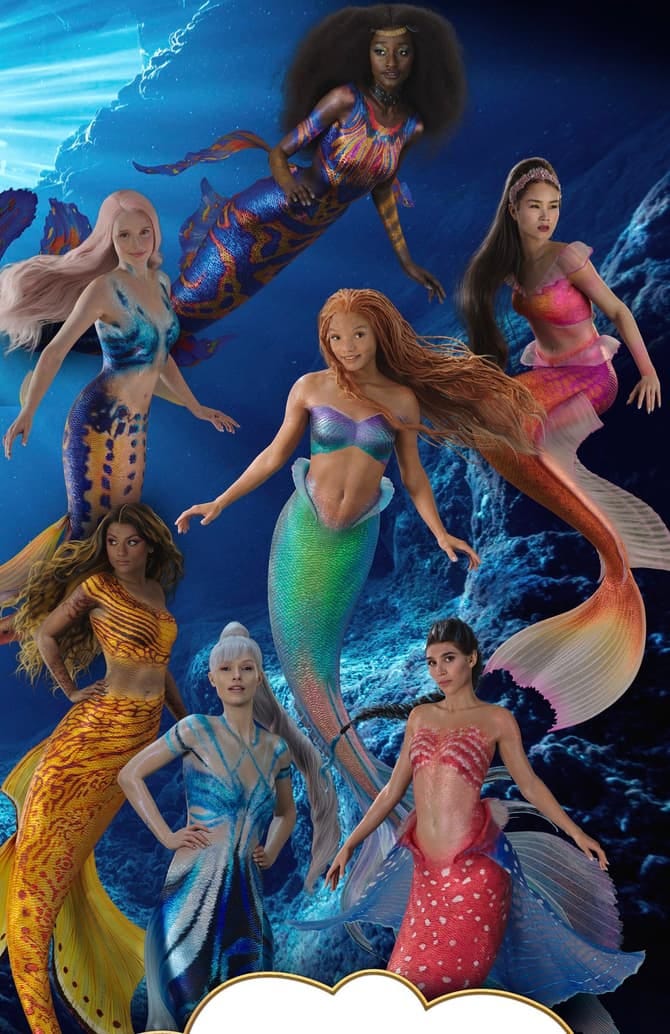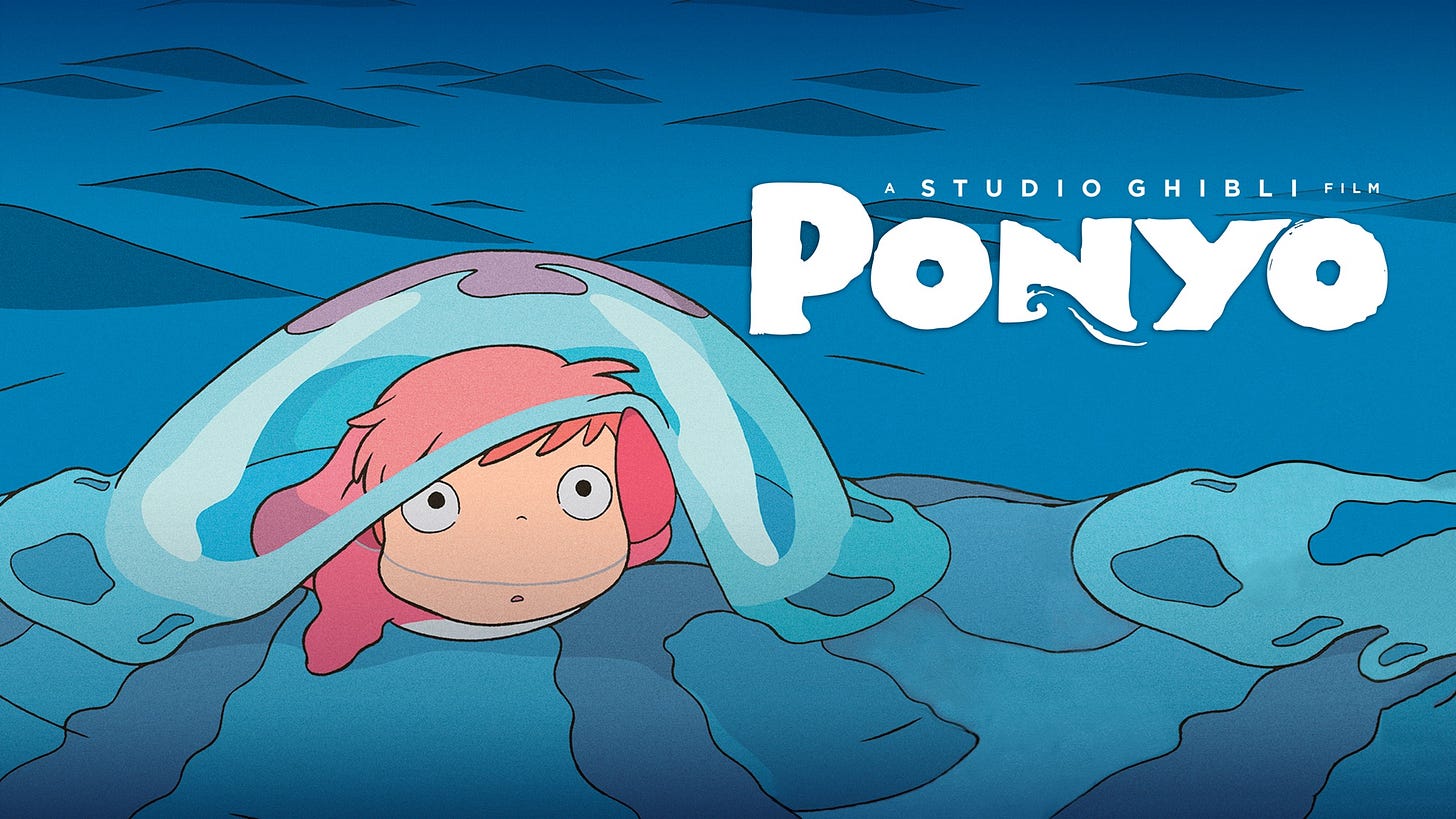I’m e rathke, the author of a number of books. Learn more about what you signed up for here. Go here to manage your email notifications.
Something that struck me in watching three versions of the Little Mermaid fairytale in a relatively short time period is how different they all are from Hans Christian Andersen’s original, as one might expect.
Andersen’s Little Mermaid is about twenty pages and a bit more brutal.
Not exactly made for singing and dancing, even underwater.
Her earthly legs will forever hurt for the pain of losing her tail. She has no soul and the only way to gain one is through the prince falling in love with her, with part of his soul filling her.
But the prince loves to watch her dance—every step agony—and though she becomes his favorite companion, without her voice, he falls in love with another. He marries her.
Heartbroken, the Little Mermaid is given a dagger by her sisters. If she kills the prince and lets his blood drip upon her feet, she will become a mermaid once more.
She refuses and dissolves into foam for love of the prince who didn’t love her.
She becomes an earthbound spirit, a daughter of the air, and is able to earn her soul if she spends centuries in service of humanity. Then, and only then, will she be able to enter heaven.
What a fun time for kids!
My wife had been looking forward to the new Little Mermaid live action adaptation from Disney because she likes these kinds of movies. As it is, she prefers the live action Aladdin, for example, to the animated one from the 90s.
This new mermaid arrived on Disney+ without ceremony and we stumbled upon it and gave it a go, though I was staggered by the runtime of 135 minutes.
I remembered this from when it was in theatres. At the time, I said, Imagine taking a five year old to a movie that’s over two hours long.
There’s no pause button at the theatre, babies. That child you brought along who was so excited to watch the movie is going to have to leave the theatre at least once to go to the bathroom. And if you allow that child to guzzle down lemonade or whatever, it might be two bathroom breaks.
One peculiarity of the post-LOTR world of Hollywood is that movies no longer need to be under two hours to maximize screenings at the theatre. Rather, it seems like every movie now stretches on past two hours.
This tends to, in my view, accentuate the weaknesses of a movie. Where a script would have, thirty years ago, been cut down to the bone to keep it at 90-110 minutes, now all that excess skin is allowed to hang loosely from the final product.
Yes, sometimes this cutting led to great movies mangled by media conglomerates. The list for this is long.
But I wonder, not idly, if the lengthening we see is worse.
While not all the live action adaptations of beloved Disney movies stretch past two hours, almost all of them are about thirty minutes longer than the animated originals.
Remember: the target market for these are children.
Very young children.
Of course, streaming has so thoroughly changed Hollywood that maybe studio executives just assume this will only be seen from a child’s couch while they eat slices of apple or chicken nuggets or mac and cheese or whatever people fill their kids with.
Anyway, we watched the movie and it’s fine. It’s overly long and overly explains everything.
But remember: I am not a child.
Not anymore. Not really.
And so I knew this was never going to be for me. I also have never been attached to the original, which I’d rarely seen. In fact, I watched it for the first time in decades just a few weeks before watching the live action version.
It was pretty good!
It’s a tightly packed story that barely passes 80 minutes in its runtime.
Where did the adaptation find the extra hour?
Well, in explaining things over ten-minute dramatized scenes with new characters. That the original did the same thing with great clarity from 3 seconds of visual explanation leads me to a certain question.
Do we expect audiences to understand the thing happening in front of their eyes?
Maybe not!
The original is, I think, much clearer all the same. It relies on the medium to tell its story, using visual language and music to convey a love story and all that. There’s darkness—not as much as Andersen’s—but more than in the live action remake.
It is a movie unafraid of upsetting or even scaring its audience. And it boldly tells its simple story in a straightforward and clear style.
Where the live action adaptation is anxiously trying to explain in as unambiguous a way as possible, the original just confidently lays out the story.
And, I mean, the story is not hard to follow.
Generations of children understood it just fine.
But what struck me most about this live action adaptation of a beloved movie was how bad it looked.
The CGI is just terrible. Like, aggressively bad. Everything looks cheap and fake and hokey.
Jurassic Park came out thirty years ago and its CGI holds up infinitely better than this movie. And this Little Mermaid cost twice what Jurassic Park cost to produce, once adjusted for inflation.
I find this astounding, especially since the animated movie looked so good.
But rather than go on about how most movies now look like absolute shit, I want to talk about the best version of the Little Mermaid.
Miyazaki and Studio Ghibli experimented a bit with CGI in addition to traditional hand drawn animation in the past, but, with Ponyo, Miyazaki wanted to return to a fully hand drawn style.
And it is glorious.
Deliriously delicious. The way the waves rise and the way Ponyo grows legs and her expressions change and transform, the way her very body morphs between this strange fishy girl to a tadpolish creature and finally into the little girl who becomes Sosuke’s friend.
The fluidity of the style, from the surreal and fantastical, to the grounded in reality, makes this look so damn good.
And when you compare that to the CGI mess that is 2023’s Little Mermaid, which cost more money to produce than Ponyo brought in at the box office, you have reason to despair.
To believe movies are, in fact, becoming worse.
That the technical know-how that made movies look so good for so long have completely vanished as computers and greenscreens have taken over production. These were once tools to assist artists and technicians, but they’ve now completely replaced them.
And the results are muddy, ugly, soupy messes of digital colors and uncanny valley humans that look worse than PS3 games.
I mean, this PS2 game looks better than the new Little Mermaid.
ANYWAY.
Ponyo is the story of becoming a person.
Not just for Ponyo, our Little Mermaid, but also for Sosuke, the five year old boy who meets her.
He’s a bit older than my eldest son is now and I see that in my own son too. The way, day by day, he becomes more who he is. Stepping out from the fog of childhood and entering the solidity of his personality.
Granted, this process has been going on his whole life, but I do feel as if I’m coming to know my son in new ways. Just last night, my wife described him as a companion.
And I think that is a significant distinction.
He’s not just a child. Not just our child.
He’s becoming who he is.
And all Little Mermaids are about becoming a person, quite literally, but only Miyazaki tackles this in the same way that Andersen did. While Andersen makes it all quite Christian and theological, Miyazaki embodies the development of humanity in children, who are, quite literally, in a long process of becoming themselves.
And we see Ponyo choose her own life. She deliberately leaves her father twice, rejecting the world of the oceans. Eventually, she is given the blessing of her ethereal, godlike mother, but not before Sosuke pledges to accept Ponyo.
To love her.
And while there are many things that could be said about the various Little Mermaids, I think this is where Ponyo rises above all of the rest.
It’s gorgeous, yes. Visually, there’s no other version to rival it. But it also doesn’t have them infectious tunes, buddy. And so maybe we can call it even.
But this simple story, I think, is told best in Ponyo.
A girl desires the surface. She meets a boy. In this version, the boy accepts her.
Nurtures her.
Rather than the mermaid saving a prince, a little boy’s curiosity pulls this fragile fish out of the polluted ocean to revive it. And he becomes friends with it. Learns to love it the way we all love our pets.
But when she returns as a little girl, full of wild magic, he accepts her without question. She doesn’t need to prove herself to him.
Like any children of that age, they fall into one another and become like one. Bound together yet boundless in their love and joy.
And while part of me wants to talk about the environmentalism of Ponyo, I suppose, this one time, I’ll refrain from bringing politics into this unless you click on this little number at the end of this sentence1.
My novels:
Glossolalia - A Le Guinian fantasy novel about an anarchic community dealing with a disaster
Sing, Behemoth, Sing - Deadwood meets Neon Genesis Evangelion
Howl - Vampire Hunter D meets The Book of the New Sun in this lofi cyberpunk/solarpunk monster hunting adventure
Colony Collapse - Star Trek meets Firefly in the opening episode of this space opera
The Blood Dancers - The standalone sequel to Colony Collapse.
Iron Wolf - Sequel to Howl.
Sleeping Giants - Standalone sequel to Colony Collapse and The Blood Dancers
Some free books for your trouble:
The movie begins demonstrating what pollution has done to the oceans and what it has done to the numinous world of magic and beauty. Our King Triton, here, is a steampunked environmental wizard trying to protect the oceans from the humanity he abandoned for love.
In this he mirrors Ponyo’s journey, and this makes giving her up to humanity all the harder. Like any convert, he cannot conceive of someone choosing to take up what he abandoned. But he’s also right. Humanity is destroying his environment, devastating the magic that he wields to hold back technology’s spewing tide of garbage.
And when Ponyo uses this unbottled, wild magic to enter humanity, the earth itself seeks balance by drowning the world, trying to reclaim her.
Ponyo’s mother, who Fujimoto abandoned humanity for, is a wild and ethereal godlike entity of the ocean. She helps balance the world after Ponyo and Sosuke’s choice. And then she swims off, leaving Fujimoto, once more, as steward of her realm.
And he stands there, lost. Alone. Abandoned by wife and child while the world he’s desperate to save rots round him.




I have yet to watch the live action Little Mermaid but have been disappointed in all of the remakes so far, and I totally agree with the diluting, belaboring effect of overlong movies. It’s hard to beat good pacing and a light touch. (Early Pixar movies really nailed pacing too!) I’ve often felt this way about books too--there are some doorstoppers that earn their voluminousness but a surprising number of novels feel “under-edited” and lose out on their potential as a result. (I think I would be guilty of this myself, all the more appreciation for good editors!)
And Ponyo is such a gem!
Wait, Studio Ghibli did a version? I MUST SEE THIS.